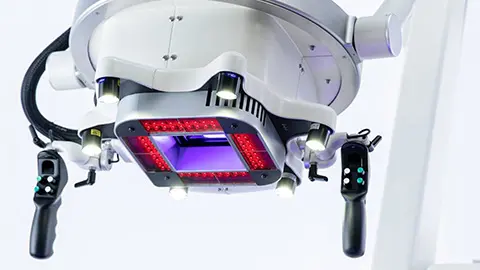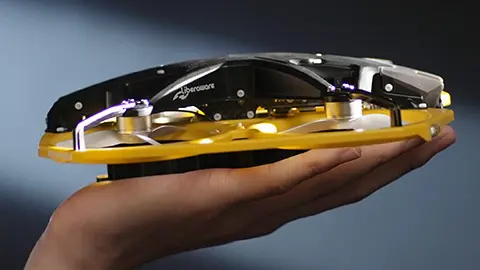VOL.194 JULY 2024
JAPANESE SMALL AND MEDIUM ENTERPRISES LEADING THE WORLD
World-leading Precision Polishing Technology, Even Used for Space Development

Photo: TDC
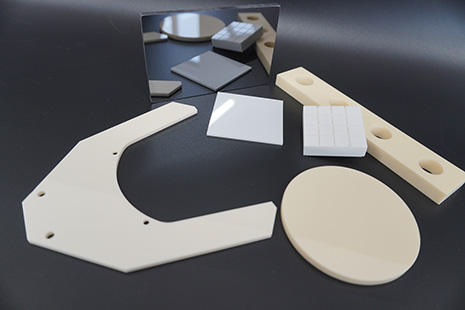
Photo: TDC
One company in Japan has the technology enabling precision polishing under 1 nanometer (“nm”* hereinafter) for any type of material and any shape. This is TDC Corporation. The company has received much praise both in Japan and around the world for this technology, which has been adopted for use in both domestic and international space projects.
Many components of precision equipment used in the semiconductor, medical, aerospace and other fields require surfaces polished to levels of smoothness with surface roughness less than 1 nm (one billionth of 1 m). We interviewed President and CEO AKABANE Yuko of TDC Corporation, which developed fully original technology capable of meeting such demands in the field of ultra-precision polishing.
One strength that sets TDC apart is the suitability of its ultra-precision polishing for application to any type of material, including metal, ceramics, and resin. This technology, capable of achieving surface roughness Ra values** below 1 nm to realize mirror-like surfaces in a diverse range of materials, differs from other methods such as surface-grinding or precision-cutting.
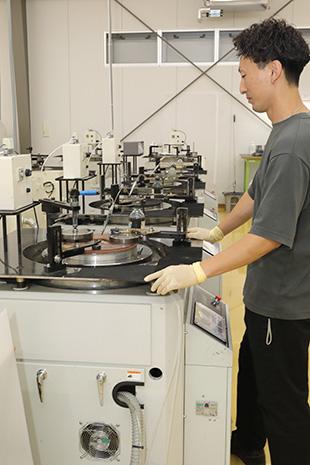
Photo: ISHIZAWA Yoji
“In between the polishing plate installed in the polishing device and the material being polished, we insert a polishing solution made of a combination of abrasive grains (general term for powdered materials used for cutting, grinding, polishing, etc.) and lubricating liquid (general term for the liquid used to provide moderate lubrication during polishing). As the two are rubbed together, the abrasive grains are made to float freely across the surface of the material to polish it. We use materials including diamonds and ceramics for the abrasive grains, and their size is tiny — on the nano-level. Mechanical and chemical actions occurring with the material being processed and the abrasive grains enables nano-level polishing.”
The company has taken on challenging requests from clients requiring ultra-precision processing at the nano level with special materials, complicated shapes, and so on. Consequently, the company finds solutions to what once seemed impossible, while engaging in repeated trial and error to improve machining processes. Through maintaining this spirit of challenge, TDC has found the way to repeated successes.

Photo: TDC
“While our focus is on customers in fields of advanced technologies, we work with any market scale, even undertaking development for a customer. Still, we strive to make information concerning these new technologies we develop available worldwide through our website. This is because we understand that there may be others out there who face challenges demanding the same technological solutions.”
Along with its precision machining technologies, TDC maintains a strong commitment to precision measurement as well. World-leading measurement equipment provides support for the company’s technological capabilities. An on-site precision measurement room where a controlled temperature of 20°C is maintained throughout the year provides an environment in which changes as minor as several atoms being removed can immediately be measured and evaluated in their own facilities.
“While surface changes realized with nano-level processing are invisible to be seen with the naked eye, precision measurement can make even the smallest variations visible. This enables efficient ultra-high-precision processing. And such data evaluated with top-class equipment also helps in building relationships of mutual trust with customers.”

Photo: ISHIZAWA Yoji
TDC Corporation is also set apart by its friendly work environment. Company employees are of a wide range of ages, from their late-teens into their 70s, and are gender balanced well with a male-to-female ratio of around 6:4. The job turnover rate is also extremely low. The organization of the company has no official positions either, and is flat instead, encouraging lively communication between fellow workers, no concerns of overly long work hours, and high productivity. The work environment has also helped individual employees acquire skills and increase their technical abilities. At present, TDC Corporation has dealings with approximately 4,000 companies in 19 countries.
Recently, the company’s technologies have even been adopted for use in space development projects. The company says that it has polished the sample containers for sample return missions such as JAXA’s*** Hayabusa2 and MMX (Martian Moons eXploration) missions.

Photo: ISHIZAWA Yoji
“It is our pleasure to be of service to our customers. Our client’s issues are the source of our growth. We will continue to take on such challenges accordingly.”
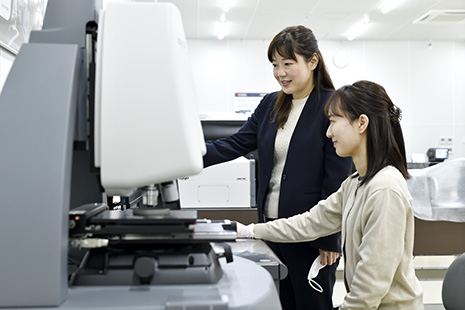
Photo: TDC
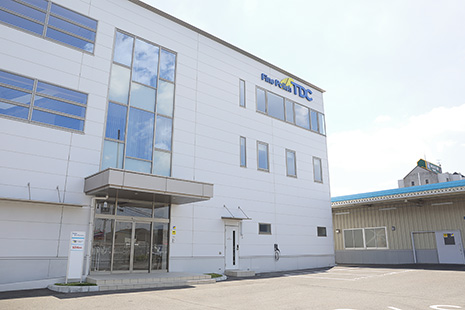
Photo: ISHIZAWA Yoji
* International unit of length. 1 nanometer (nm) is one billionth of a meter.
** Surface roughness expresses the degree of unevenness (roughness) in a surface after it has been processed, based on various criteria. Ra represents one formula for calculating such measurements, expressing surface roughness in the height direction.
*** An abbreviation of Japan Aerospace Exploration Agency, a Japanese governmental organization.
By SAKURAI Yuko
Photo: ISHIZAWA Yoji; TDC
